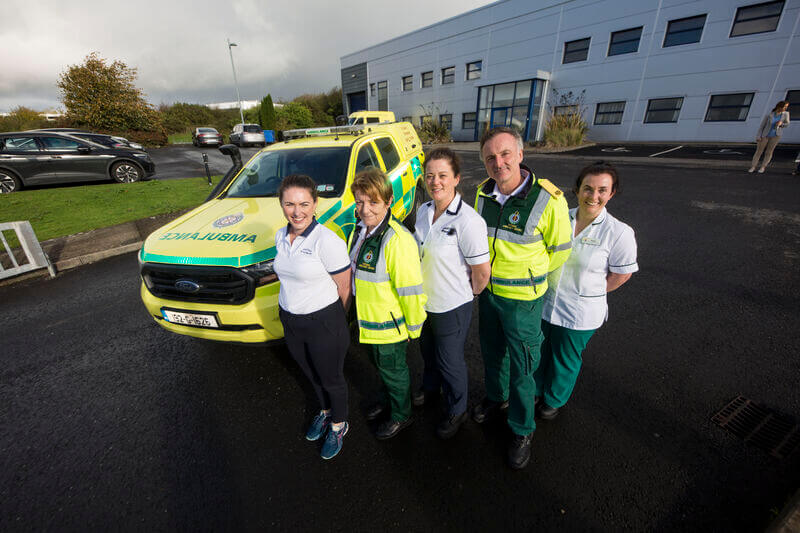
A HSE National Ambulance Service (NAS) led service called Pathfinder, designed to safely keep older people who phone 112/999 in their own home rather than taking them to a hospital emergency department, has been introduced in Limerick, Tallaght and Waterford.
Pathfinder is aimed at improving outcomes for older people by providing safe alternative care at home rather than in hospital is being provided by National Ambulance Service staff, working with colleagues from HSE acute hospitals.
Pathfinder has already been working as a collaborative service between NAS and Beaumont Hospital Occupational Therapy & Physiotherapy Departments for more than two years.
Robert Morton, Director of the HSE National Ambulance Servicesaid the expansion of the NAS Pathfinder Model is part of a plan to offer different groups of patients an alternative pathway other than presenting to a busy emergency department.
“NAS is delighted to be working with University Hospital Limerick, Tallaght University Hospital and the University Hospital Waterford who have agreed to support the expansion of the Pathfinder model to other parts of the country. NAS Pathfinder is improving outcomes for older people by minimising unnecessary ED attendances and offering safe alternative care pathways for older people in their own homes rather than in hospital.”
Welcoming the introduction of the service to Limerick, Prof Colette Cowan, CEO of UL Hospitals Group said University Hospital Limerick was pleased to be able to offer this service to suitable older people in its catchment area.
“We know that the Pathfinder Model demonstrates that Pre-Hospital Services can help to safely keep older people, who have phoned 112/999, in their own home rather than transporting them to a hospital ED for assessment. Many older patients can be safely and appropriately managed in their own home rather than being transported to the ED when they dial 112/999 with low acuity complaints.”
Lucy Nugent, Chief Executive, Tallaght University Hospitalsaidmany older people in the hospital’s catchment area who dialled 112/999 with non-urgent complaints will benefit from the Pathfinder care model.
“Pathfinder aims to reduce congestion in busy EDs and makes for a better environment for patients and staff on the floor whilst improving overall flow through the ED. The service enables increased ED capacity to care for other patients, by supporting this cohort of complex, frail patients at home.”
“The service is particularly welcome as we approach the winter, we know that our older citizens are particularly vulnerable to adverse events and poor outcomes during emergency department attendances and hospitalisation.”
Welcoming the new service to Waterford, Grace Rothwell, General Manager, University Hospital Waterfordsaid the hospital looked forward to collaborating with the National Ambulance Service for the benefit of older people in the area.
“Many patients who present to the emergency department have non-urgent care needs that could be treated elsewhere. Overall, Pathfinder has shown that it is a safe and acceptable service for older people who dial 999/112 with low acuity complaints.”
Pathfinder received initial funding from the Sláintecare Integration Fund to test the model in 2020 and has been operational since May 2020. The three new Pathfinder teams have been funded by the HSE.
The Pathfinder ‘Rapid Response Team’ respond to 999/112 calls for older people (65 years and older) in their homes. The older person is assessed by both an Advanced Paramedic and Occupational Therapist/Physiotherapist. Where safe, the team supports the older person at home rather than transporting them to emergency department, by linking with a wide range of alternative hospital and community services. Pathfinder also operates a ‘Follow-Up Team’ (Physiotherapy & Occupational Therapy) which provides immediate home-based rehabilitation, equipment provision and case-management in the subsequent days following a 999/112 call.
On average two-thirds of patients seen by Pathfinder following a 999 call have remained at home rather than being brought to the Emergency Department.

